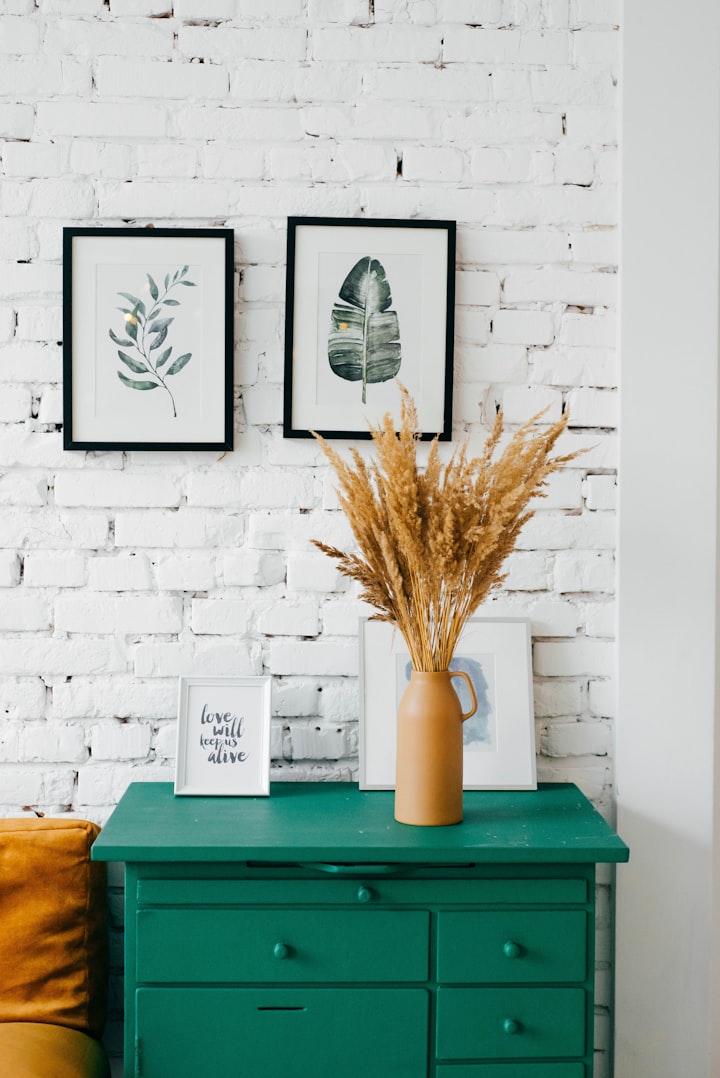The Most Common Mistakes People Make When Decorating Their Home
Here's what you can do to avoid these mistakes and make your home beautiful

Walking into a beautifully decorated room gives you an instant feeling of relaxation and happiness. Often you see a room in a magazine that you fall in love with and think, "I could do that in my own home." Only when you give it a try, it completely flops. For whatever reason, we can't create the same look and feel in our own homes.
Not everyone was born with the gift of interior design. Sometimes, even the most highly-trained interior designers struggle to pull a room together when decorating. I will show you the most common mistakes people make when decorating their homes and what you can do to avoid these mistakes.
Don't be Afraid to Ask for Help
One of the most common mistakes people make when struggling to decorate a room is not asking for advice. When you are struggling to decorate a room, ask for help from your spouse, friend, or family member. Do some online research to look for color schemes, design trends, etc.. Never go into decorating blind. Know what you are looking for before you start decorating, and if something is missing through the process, you will know who to ask for help.
You can even reach out to an interior designer to ask some questions. Some of the questions you should ask yourself before you start decorating include:
• What color scheme would go best in the room you're decorating?
• How should you arrange the furniture?
• What type of rug should you use in the space?
• Are you going for a minimalist look?
• How do you utilize the size of a room?
Asking questions from people you know can help is the first step to creating a solid plan for decorating a room. Now it's time to talk about planning. You've got a plan, right?
Not Planning Your Design
Poorly planning your design can set you up for failure before you even get started. Not having a plan in any decision that costs money can be risky. Planning before redesigning or redecorating a room is essential to a beautiful design, so how do you make a design plan? One tried and true method I've used for many years is the notebook planner. Use a three-ringed binder or a simple one subject notebook as a place to organize your ideas.
When planning your design, draw out a floor plan of the room you're decorating. Make a note of the goals you have for the space and any doors, windows, outlets, vents, stairs, and traffic patterns. Where is the focal point of the room going to be? What makes it an excellent focal point? With a solid plan, you'll create a beautiful design worthy of being in a magazine.
When it Comes to Rugs, Size Matters
The rug size you choose for a room can make or break your design. The size of the rug is just as important as its style and design. If the rug is too big, it can make a room feel too small. If a rug is too small, then the opposite happens, and a room feels too big. Living room rugs usually come in three sizes, 5x8, 8x10, and 9x12. One sure-fire way to ensure you get the rug size right is a trick I've used several times. Get a few rolls of wrapping paper and roll it out, cut it to the length of the largest rug size. Roll out another piece of wrapping paper on either side of the first, cutting it to the same length and taping it first. Continue to add pieces to the sides until you reach the width of the largest rug size. Then begin cutting down the paper to the next size option and keep going until you find a size that fits perfectly in the room you are designing.
Another thing to keep in mind is furniture placement around the rug. You don't want the rug to overpower the furniture, but instead, fit perfectly in the middle of the room, center to the furniture. A rug is an essential element in your design that shouldn't be overlooked. The size of the rug you choose should tie a room together and bring your design vision to life.
Getting Carried Away with Wall Décor
Every room can benefit from wall décor. The struggle comes from finding the perfect balance with size and how much wall art you should go with. An excellent tip to keep in mind when hanging large portraits is to keep them eight to ten inches higher than your furniture while still being at eye level for the average person. If you choose to go with a large portrait, only hang one large portrait in that room. Large wall décor should be used as the focal point of the room.
Another thing to keep in mind is not to hang too much wall décor in a room. Don't clutter your walls with wall art and portraits. You need to leave enough white space on the walls for the wall décor to stand out. Gallery walls are a great way to hang multiple pieces of framed work without overpowering a space.
Artwork and wall décor can drastically change the design of a room for the better when used correctly. Don't be afraid to experiment with wall décor when planning your design. Walls give you plenty of space to let your favorite designs shine. So, don't be afraid to use them. However, don't go overboard. Remember, more is less.
Cluttered Mantels, shelves, and Tables
A cluttered space never looks good when it comes to decorating. Don't put too much décor in one spot. Mantles are a great place to display photos and décor, but your pieces get lost in the chaos if you add too much. The same goes with any surface in a room, even if you aren't a minimalist. You can have too much of a good thing.
When decorating surfaces, use décor pieces of varying heights to create dimension and interest. If you have a small space, don't' add too much décor to the room. You can make a small room look better when you use less. You can apply the opposite to the rule for large spaces. A large room doesn't mean you can hoard décor, but you can use larger décor pieces to make the room feel cozy and more inviting.
Never Paint a Room Before Choosing Your Furniture and Décor
This is where that plan comes in handy. The paint color you choose should contrast nicely with the color and style of furniture you choose. It's cheaper to repaint a wall than to replace furniture. Keep in mind that when choosing paint in a store, the lighting may be different than what you have at home, which will change the look of the color on your walls. Purchase a small can of paint and test it on your walls in different areas of the room. This will allow you to see how the color will appear in your home. Holding up paint swatches to your wall is another bad idea. Again, this will not show you the actual color of the paint you choose.
Mistakes happen when designing or redesigning a space. You can easily avoid costly mistakes by thoroughly planning your design before you get started. Once you're done planning, start with a blank canvas. Clear everything out of the room you're going to be working in and give yourself plenty of room to work and be creative. Don't be afraid to rearrange furniture and décor multiple times before you complete your design. It helps to move things around and see what pieces look like in different areas before making the final call on your design. Decorating is a great way to refresh your home. Good Luck and Happy Decorating.






Comments
There are no comments for this story
Be the first to respond and start the conversation.